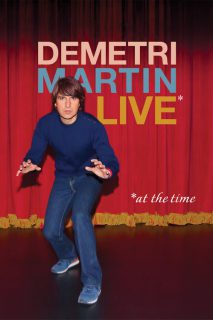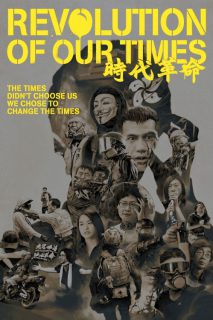
- Year: 2021
- Released: 06 Sep 2021
- Country: United States
- IMDb: https://www.imdb.com/title/tt15379452/
- Rotten Tomatoes: https://www.rottentomatoes.com/m/this_is_francis_x_bushman
- Available in: 720p, 1080p,
- Language: English
- Genre: Documentary
- Runtime: 60 min
- Writer: Debra Davis, Lon Davis
- Director: Lon Davis
- Cast: Chris Bushman, Francis X. Bushman
 | 7.3/10 |
This Is Francis X. Bushman Play trailer
This Is Francis X. Bushman Photos



This Is Francis X. Bushman Torrents Download
| 720p | bluray | 554.45 MB | magnet:?xt=urn:btih:2C211398EA2764F5FAA6235E62A35AB008D900E4 | |
| 1080p | bluray | 1.01 GB | magnet:?xt=urn:btih:7607C4E66011AA0EB583D66FEE180DF6B7D1601F |
This Is Francis X. Bushman Subtitles Download
This Is Francis X. Bushman Movie Reviews
Matinée Idol of the Silent Screen
Brief at about an hour in length, “This Is Francis X. Bushman,” is nonetheless a suitable documentary for its silent-film star subject. Not every biography need be two-hours-plus and in-depth psychologizing investigation. From the Niles Essanay Silent Film Museum and Bushman biographers Lon and Debra Davis (authors of the book “King of the Movies: Francis X. Bushman”), I caught this on the final day of the live stream for the 2021 Cinecon Classic Film Festival, but the documentary is to be released soon by Flicker Alley, as well, along with some short films starring Bushman and other fragments and clips as extras on the Blu-ray.
The pinnacle of Bushman’s career was in the 1910s when he was perhaps the most popular leading man–maybe only being eclipsed in stardom by the likes of Mary Pickford or Charlie Chaplin, the latter of whom joined Bushman at Essanay for a time and whose Essanay short “His New Job” (1915) the documentary suggests poked fun at Bushman’s persona. Bushman was best known for his romantic coupling with co-star Beverly Bayne on screen, such as in the now lost 1916 Metro version of “Romeo and Juliet,” which Fox tried to imitate and beat to market with their own version starring vamp Theda Bara and which is also now lost. Bushman and Bayne’s careers languished after their real-life marriage and the press scandal of Bushman reportedly abandoning his child and first wife (of four women he’d marry throughout his life), although it would soon be eclipsed by other Hollywood scandals including Fatty Arbuckle’s trials for rape and manslaughter, the murder of William Desmond Taylor and the rumored one of Thomas H. Ince, the drug-related deaths of Wallace Reed and Olive Thomas, and others.
Despite his comeback in what is probably his best remembered role as Messala in “Ben-Hur” (1925), Louis B. Mayer reportedly being the schmuck he’s often been reported as having been, blacklisted Bushman over, according to Bushman, a salary dispute. It was the theatre, radio and parts in poverty-row film productions from there on out until Bushman began getting some small parts in big studio productions–especially after Mayer’s tenure at MGM ended. A dramatization of the murder of silent film director William Desmond Taylor, “Hollywood Story” (1951), and made to capitalize on the success of “Sunset Boulevard” (1950) sounds especially intriguing to me. I would also love to see Lois Weber’s “The Marriage Clause” (1926), which starred Bushman in a reportedly John Barrymore type role of an alcoholic star on the wane. Heck, I haven’t even seen any of Bushman and Bayne’s on-screen couplings, either, and they seem to be in short supply these days.
Bushman was one of the first and biggest movie stars and who has since fallen into obscurity. That alone makes him a good subject for a documentary, and although this one mostly merely follows his career from muscular model for bronze statues to senior-citizen motivational speaker, Bushman was continually working in a public role, so “This Is Francis X. Bushman” fits the bill.
great look at a huge silent screen star
Francis X. Bushman was a favorite of my grandmother’s, and I knew him from Ben Hur, so I watched with interest.
This is an excellent documentary about Bushman’s career and life, and a fascinating look at early days of film and of film acting. And the money – $750 a week in the ’20s with a $50,000 bonus (the equivalent of $717,000 today) at one point. He even owned a house on which Grauman’s Chinese Theatre was eventually built. And he spent it all and lost it all in the Wall St. Crash.
Hosted by his grandson, we learn that Bushman’s career was multivaried – he started as a sculptor’s model, worked in the old nickolodeon short films and on the stage, and he became a huge silent film star and matinee idol.
Bushman handled aging and the downturn in his career by working in radio, becoming a spokesperson for the elderly, and later appearing in films and television. In fact, the day he died, he was on his way to a film job.
The documentary is only an hour and is packed with information and film clips. Give it a watch. It’s worth it.
Viva Bushman!
A brief account of the career of one of the first great movie stars, who was blacklisted by Louis B. Mayer, when Bushman had the nerve to demand his back pay. His grandson, Sam Bushman, narrated, but a professional should have been chosen. Bushman’s joie de vivre extends “beyond the footlights,” and we’re convinced: Hollywood was the place to be during the early decades of the 20th century.



